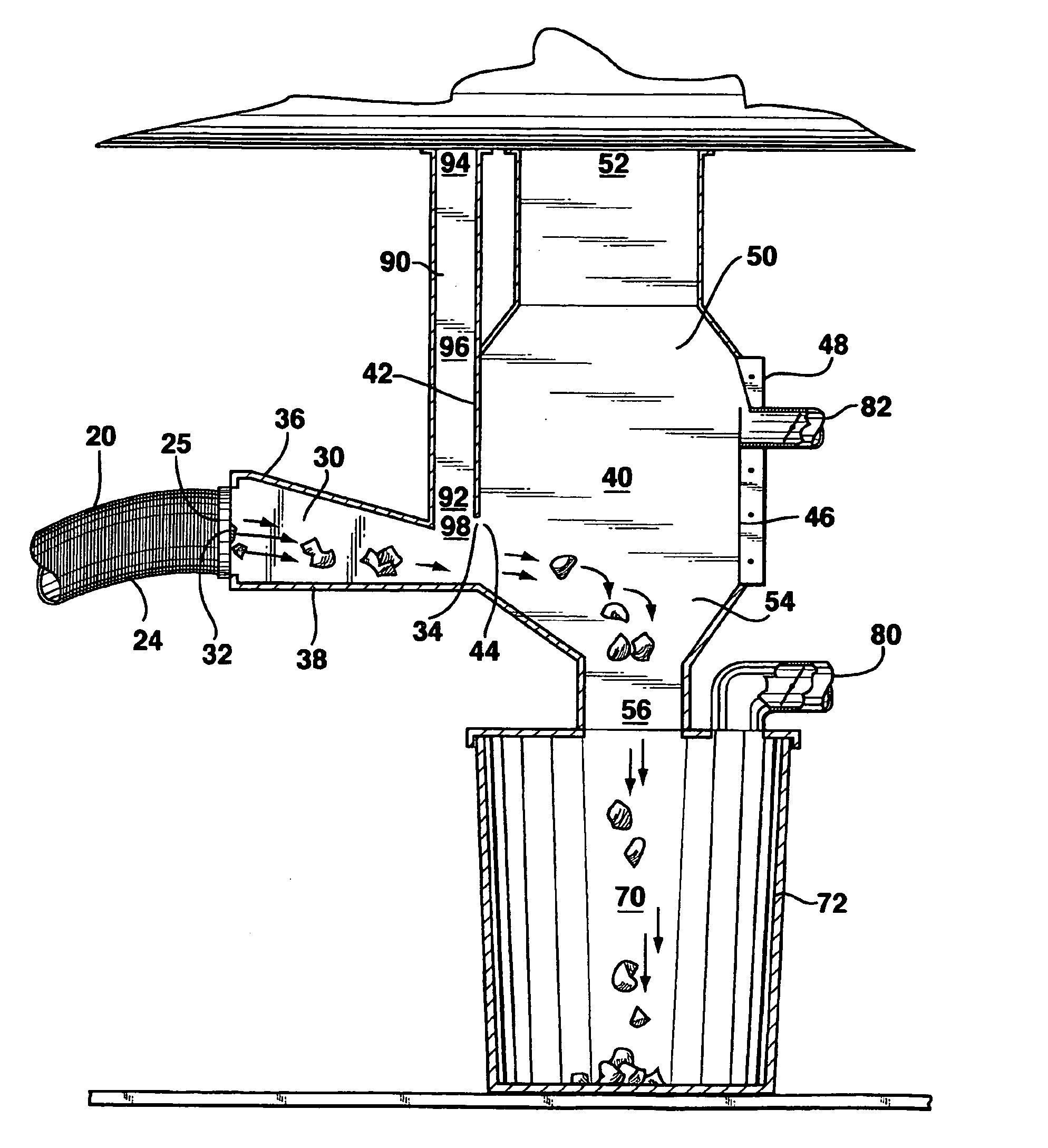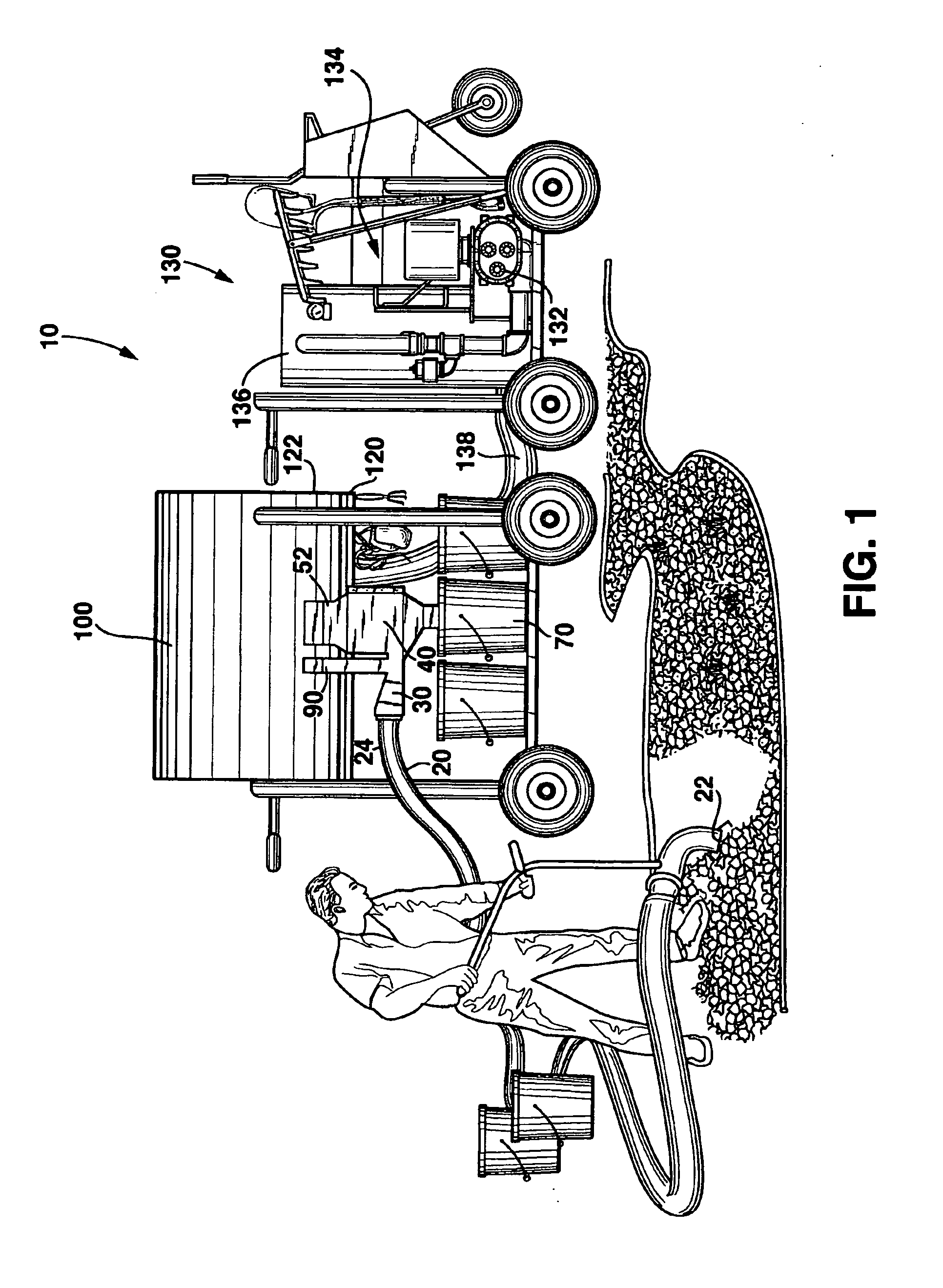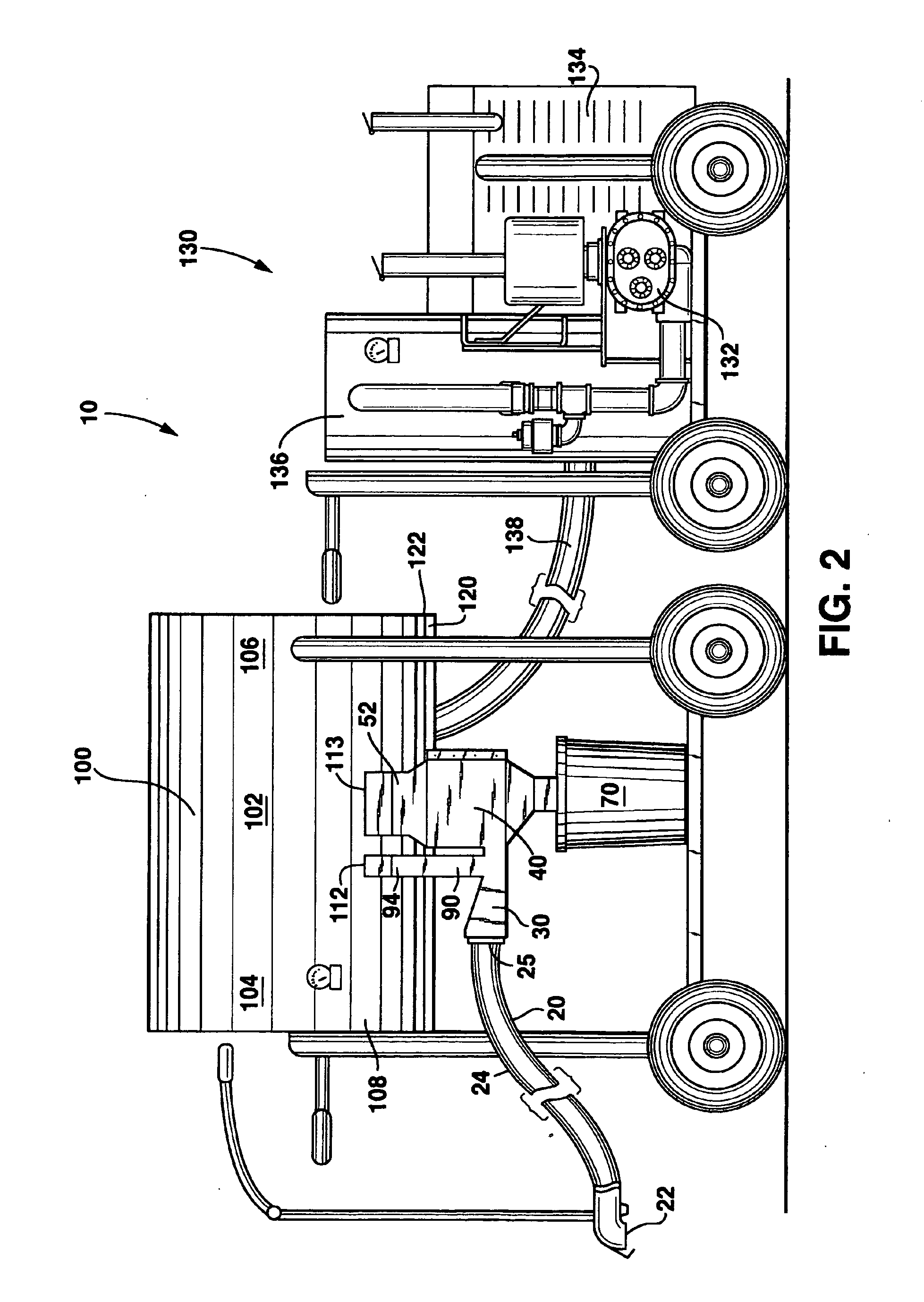Pneumatic classification of mixtures of particulates
a technology of particulates and mixtures, applied in the direction of gas current separation, dispersed particle separation, separation processes, etc., can solve the problems of reducing the airflow velocity of the airstream, and reducing the aerodynamic support fraction. , the effect of reducing the velocity
- Summary
- Abstract
- Description
- Claims
- Application Information
AI Technical Summary
Benefits of technology
Problems solved by technology
Method used
Image
Examples
second embodiment
[0092]There are three other embodiments of the pre-exhaust 90 that do not require the chamber partition 58 to form the pre-exhaust 90. A second embodiment shown in FIG. 5, includes an entry section 30 with an entry section pre-exhaust outlet 98 connected to a pre-exhaust inlet 92 to abruptly withdraw air from the entry section 30 between the entry section inlet 32 and the entry section outlet 34. The pre-exhaust midsection 96 may be a structure separate from chamber 40 depending on the proximity of the entry section pre-exhaust outlet 98 to chamber 40.
[0093]A third embodiment shown in FIG. 6 is a special case of the second embodiment and includes the entry section pre-exhaust outlet 98 immediately adjacent to the entry section outlet 34 next to the chamber inlet side 42. Entry section pre-exhaust outlet 98 is connected to a pre-exhaust inlet 92 to abruptly withdraw an air steam from the entry section 30 proximate the chamber inlet side 42. The pre-exhaust midsection 96 may have a po...
fourth embodiment
[0094]The fourth embodiment, shown in FIG. 7, includes a chamber inlet side exhaust outlet 99 proximate the chamber inlet 44 and connected to the pre-exhaust inlet 92 for the abrupt withdrawal of air from the chamber 40 proximate the chamber inlet 44. The pre-exhaust midsection 96 can be adjacent to or separate from the chamber 40.
[0095]Now, turning to the other elements connected to the chamber 40, a chamber collector means 70 is disposed adjacent to and below the chamber discharge outlet 56. The chamber collector means 70 comprises a collection container 72 such as a common five gallon pail which is removable and has an airtight connection to the chamber discharge outlet 56 when the apparatus 10 is operating. Alternatively, the chamber collector means 70 may be one or more integral hoppers that discharge to other containers or onto a conveyer.
[0096]A chamber air supply means 80, FIGS. 3 and 4, draws ambient air into the chamber discharge outlet 56 through collection container 72 b...
embodiment 300
[0143]As depicted in the block diagram of FIG. 32, in another embodiment 300, the present invention is a method of separation of mixtures of populations of high specific gravity particles and low specific gravity particles into two segregated populations of granules. In the method of this embodiment, the two segregated populations of granules are each characterized by a dissimilar range of specific gravity. These two populations may be understood as defining, first, a high specific gravity range granular material and defining, second, a low specific gravity range granular material. The method for separating the two populations includes the steps of: providing an initial airstream 302; incorporating the mixed granular material into the initial airstream 304; slowing the initial airstream to allow the high specific gravity material to fall 306; providing a second airstream with an upward direction 308 and directing the second airstream against the falling high specific gravity materia...
PUM
| Property | Measurement | Unit |
|---|---|---|
| specific gravity | aaaaa | aaaaa |
| aerodynamic support fraction | aaaaa | aaaaa |
| gravity | aaaaa | aaaaa |
Abstract
Description
Claims
Application Information
 Login to View More
Login to View More - R&D
- Intellectual Property
- Life Sciences
- Materials
- Tech Scout
- Unparalleled Data Quality
- Higher Quality Content
- 60% Fewer Hallucinations
Browse by: Latest US Patents, China's latest patents, Technical Efficacy Thesaurus, Application Domain, Technology Topic, Popular Technical Reports.
© 2025 PatSnap. All rights reserved.Legal|Privacy policy|Modern Slavery Act Transparency Statement|Sitemap|About US| Contact US: help@patsnap.com



